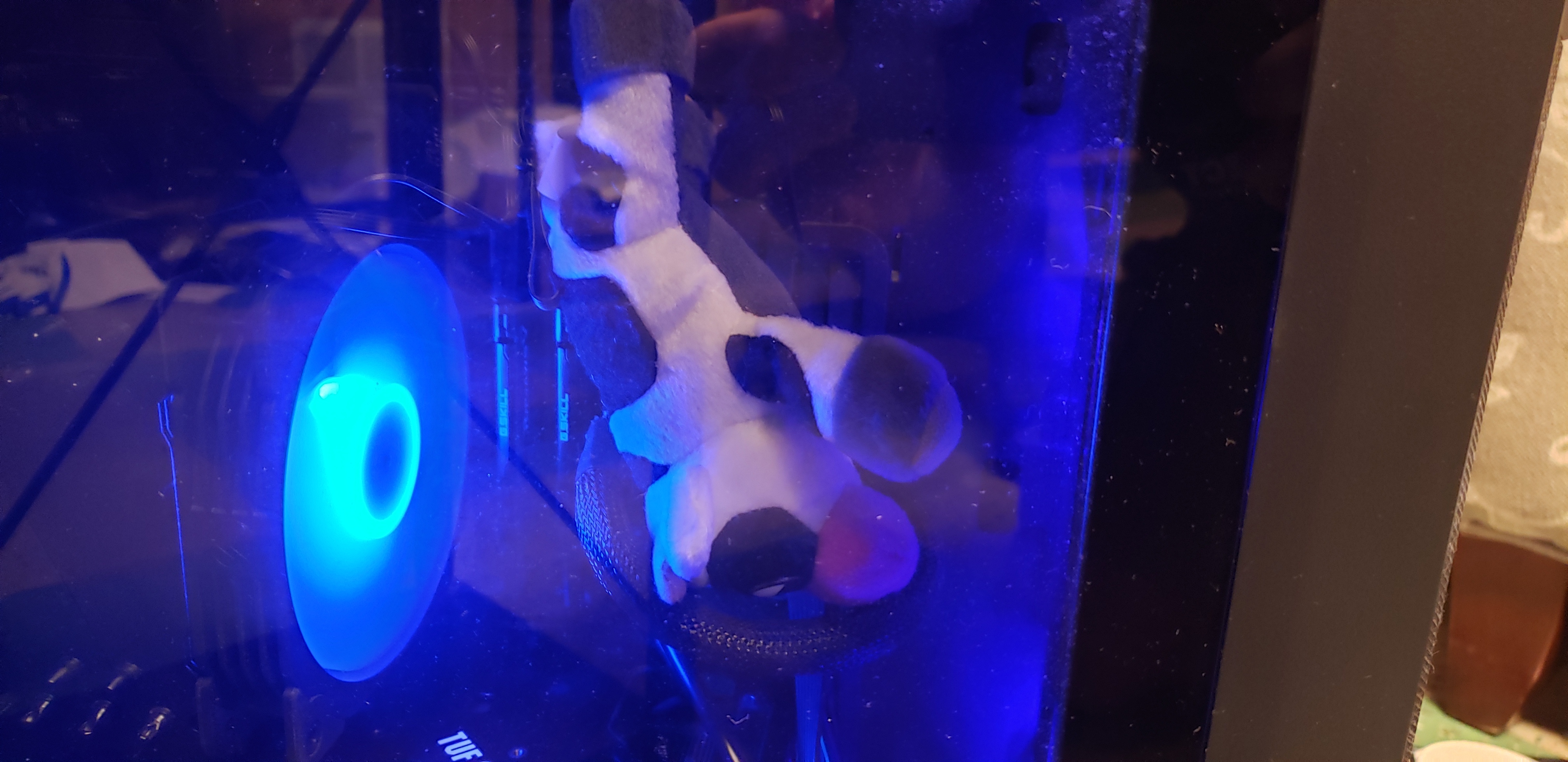I’m pretty comftable with linux mint right now but i want to peruse the wares so to speak, what are some cool or interesting distros that do things differently than mint?
Edit: i dont wanna distro hop people cool your jets, i just wanna look around cos i find it neat :3
Do any of you people actually use your OS, or do you just distro-hop and tweak things all day?
oh i only have a computer to sit there going “beep boop” and giggling to myself i’ve never turned it on
@TimeSquirrel @nicknonya Been runnin basically the same setup for the better part of ~20 years. That’s not gonna stop me from playin with stuff I don’t know or like though.
Distro-hop? Never. But getting something to work is way more satisfying to me than using that thing. (Slackware user since late 90s, recently diagnosed with adhd)
I do use my OS but I also like to play with it, that’s one beauty of Linux: you can set it up and forget about it till the end of times or you can spend days tinkering with it if it provides you joy.
The answer to that is…yes.
you know VMs are a thing, right?
You know jokes and sarcasm are a thing, right?
it went over my head, sorry for the mistake. have a lovely day.
Sorry for the confusion. I should probably start using emojis to convey playfulness in nonserious comments.
We save so much productivity finding better distros that we have 50% more time to distro hop. /s
I’m pretty comftable with linux mint right now
For the love of God, spare your free time and don’t move from what works. Consider tweaking your system instead and moving only when you broke something
spare your free time
But it’s not free time if you’re not free to waste it ¯\_(ツ)_/¯
“time you enjoyed wasting is not time wasted” - Hatzune Miku
i intended to spin up a vm lmao i’m not gonna trash my home in hopes of finding one with marginally better décor, i’m doing this for fun
This is the way.
OK so if you want my advice, if you wanna just try distros, use DistroSea. Let’s you try out distros in your browser. But here we go:
On DistroSea
- Debian: There’s a reason Mint and Ubuntu are based on Debian and it’s always good to try out just straight up Debian. I know people are going to be all “uuugh but Mint is basically Debian with extra steps”, don’t care, try Debian, you might wanna use it for other things too. If you are familiar with LinuxMint, you’re going to be familiar with
- Bunsenlabs Linux: Successor to Crunchbang, an OpenBox Ubuntu Distro. If you want something ultralight and different, you might wanna try Bunsenlabs. I used Crunchbang back in the day, may it rest in peace.
- Pop!_OS: Made for creatives and programmers, seems to be beloved, don’t really care too much, ubuntu based.
- Fedora: Not a Debian/Ubuntu based system, instead a RedHat based system. Try it if you wanna check out a non Debian based system.
- Lubuntu: Is XFCE too heavy for you? Try Lubuntu, which used LXQT as it’s desktop with an aim of being lighter than Ubuntu Mate or even Xubuntu. Aimed at old laptops and netbooks, and the website even brags that it can run on an rPi.
- Tails: Are you doing shit you don’t want your ISP or Government to know about? Are you a Journalist or an activist? Well Tails is for you, designed to be installed on a pendrive for plug n’ play action, this distro does everything through the Tor Network. It’s also marketed to victims of abuse as well, but let’s be honest if you trust the government these days you need to look at yourself in the mirror.
Not on Distrosea
- PuppyLinux: Holy ball this is a blast from the past. This is not available on Distrosea but it’s available to download. It is designed to be tiny, and I mean smol. It’s an example of how you can get a functional, low resource load OS.
- TempleOS: This is not a Linux distribution, it’s barely usable as an OS, but it’s legendary. TempleOS was created by Terry Davis, an extremely talented programmer and Schitzophrenic who created this OS to be the third temple of God. No I am not joking. It is, however, today considered a work of art by a troubled man.
Puppy has saved my ass multiple times. Love that tiny dog.
Speaking of Tails, a security minded user can also try out Qubes as well. It uses virtualization to separate different contexts like Work, Personal, Social, etc. You can have your Work profile connect to your workplace VPN while your Personal profile is on a torified connection in parallel. It does have its drawbacks, however. You need more system resources, and anything that requires direct access to GPU like videogames is not officially supported.
Fedora Silverblue or any of the other Fedora Atomic distros
Or something Universal Blue-based like Bazzite or Aurora.
I like the concept of atomic distros, but the implementation leaves a lot to be desired for me. Having to reboot after installing any software seems counterproductive to me (admittedly this was my very limited experience when I tried Bazzite).
On Fedora you can run
rpm-ostree apply-liveto apply any changes you make without rebootingLearned something new, thank you! I’m old school so it’s going to take some time to acclimate I think.
Awesome! Fedora Atomic definitely has a learning curve, but once you get used to it it’s one of the best experiences I’ve had
Well I’m not on it anymore because it frustrated this old aging brain. I’m currently on Garuda. But I may give it a go in a VM again.
Alpine Linux, because it uses OpenRC and musl, it’s an interesting choice a little bit different but I really like it nyself for servers.
Gentoo, the biggest source based distro, has Emerge, a very configurable package manager.
NixOS, uses the Nix programming language to install packages and configuring the system. Very powerful and breaks many conventions about Linux systems
Have you ever heard of Bedrock Linux? Its an extremely interesting “meta-distro” that let’s you run multiple different distros at the same time only marginally isolated. The whole premise is to merge the systems together instead of separating them with a container style workflow. Tons of stuff works cross distro to! Its extremely cool to have Debian AND Arch packages just installed the normal way on each distro. Its a beautiful and horrifying system, that warms my heart every time I remember it.
Those are distinct distros, while Bedrock is a layer that sits on top of multiple different distros and actively merges them together. At a glance, vanilla doesnt look like they merge/manage other distros at all? So I’m not sure the comparison makes sense. BlendOS is a completely different approach by using containers to isolate the different systems. Bedrock wants to merge the different systems where ever possible. I wouldn’t say either is better or worse as their goals appear to be entirely different.
If you don’t mind reading a little bit and “work hard” to get some things done and “have fun” then I’d suggest to try :
- NixOS (it can do magic!)
- Arch Linux (easiest is the Arch based EndeavourOS and the shiny colorful Garuda Linux), learn some pacman and AUR.
I look back on learning to live with NixOS and laugh. It made my brain hurt, and if I’d only found the Misterio77 repo sooner, it would’ve saved a lot of premature aging. But, if you have some basic familiarity with programming concepts, it’s an easy OS to live with, just different. And so, so, so, so powerful.
They do desperately need a set of opinionated example builds and much better documentation.
Nix + home-manager are a much better starting point than NixOS
- your system still respects FHS and can still use like npm
- you can still leverage decades of Linux knowledge
- it’s much easier to slowly build up knowledge than to have to immediately learn everything
That’s pretty much how I got where I am. Started with Fedora, then Silverblue, then Ublue, then fleek (a custom front end for Home Manager), then, when I saw what Home Manager and Nix could do, dove into NixOS fully.
What actually makes Endeavor easier than Arch? I switched to Arch from Mint a few months ago, and so far I don’t think it’s that difficult.
Garuda has been great on all my computers, even handled the upgrade to kde 6 without issue. It’s a bloaty boi tho. But that’s why I picked it, every tool I’ve looked for was either installed or easily installed via the pre setup chaotic aur
deleted by creator
I used to install interesting and cool distros back in the 2000s. Now, I personally just want stability, and not bad surprises. So when I distro-hop, I only do it among well known, largely stable and well supported distros (e.g. mint, debian, fedora, ubuntu). I don’t go for the weird anymore, although I did install Alpine on qemu in order to try it out. And the few times I feel adventurous, I try BSD or Haiku OSes.
That’s how I was on Slackware at the time. Reputable, functional, stable - and totally tailorable to your exact needs.
Everybody talks about Arch as a “pedagogic” distro, but you’ll learn a lot working with Slackware. I wonder if Lilo is still around.
Experiment with arch, void (musl), Nixos and atomic distros like fedora silverblue, bazzite
I’ve been enjoying bazzite!
You could try a rolling distro like OpenSuse Tumbleweed, or something from the Arch lineage (Arch, Endeavour, Garuda, Manjaro in order from less to more handholding).
You could also try something from the Red Hat rather than Debian world,.for example Fedora has several interesting editions, there’s the WorkStation desktop edition and Silverblue which uses Android immutable principles.
please for the love of god do not use Manjaro and if you do forget about using the AUR, Manjaro claims to be more stable by waiting 1 week before adding Arch’s packages to their repo, this breaks the AUR packages you use which may need newer dependencies. They also often forgot to renew the security certificates of their website.
Arco is better but frankly all being Arch distros the differences are close to none.
Oh no, too late! 😲 I’ve accidentally used Manjaro for 4 years and it’s been an amazing distro that’s one of the top three most used in the Steam Survey and you don’t know what you’re talking about! If only you had warned me sooner! 😔
.
I’m sure you can have a good experience on it just like you can have a good experience on Windows, etc. But first of all if we are recommending stuff then either Arch & derivates shouldn’t be recommended at all if it’s a newbie or one should recommend straight up Arch (if it’s not a newbie and needs Arch) and frankly if you want Arch made easy either going to OpenSUSE tumbleweed if the issue is stability or EndeavourOS/Arco if it’s the installation will probably net someone a better experience, so what’s the point of Manjaro anyways, and secondly none of that invalidates the bad practices by the manjaro team
I did mention both Tumbleweed and Arch so not sure what the problem is. Unless it’s that you just had to comment because you saw the word Manjaro.
It’s very tiring to get this sort of comments at the mere mention of it, “hur dur manjaro.org didn’t renew their certificates” — which is not even relevant in any way for the distro since it’s not the distro maintainers managing the site. So it just comes out as stupid.
If you don’t get the point of Manjaro you can just ask. All distros have a point, none of them exist just to be pointless and they definitely don’t rise to the top of Steam charts by being pointless.
Manjaro serves a useful niche of people who would like a rolling distro but don’t want bleeding edge and the risks that to with it. Manjaro takes the unpredictability down a notch. It also includes all kinds of helpful management tools.
I can apreciate that it’s not for everybody but some people find it useful and shitting on other people’s distro choices is crass. Especially if you don’t even know what point the distro serves, and especially in a thread about trying out new things.
Most distros are the same under the hood. I’d recommend downloading different desktop environments. You can stay on Mint and keep all your files.
oh I’m doing this for fun, i don’t plan to actually switch any time soon
what are some desktop environments you’d recommend aside from cinnamon
Definitely KDE Plasma.
I’d recommend KDE and Gnome. They’re the two most popular and mainstream DEs. If you ever plan on switching to another distro, being familiar with these two will benefit you.
If you feel really confident, you can start playing with window managers.
Day 1: Sway looks cool Day 11: SwayFX looks cooler Day 29: Hyprland looks wild Day 44: niri looks fun Day 63: This WM I found on a repo by a random Serbian guy looks great. Day 97: I WROTE MY OWN WAYLAND COMPOSITOR AND WINDOW MANAGEMENT CONCEPT FROM SCRATCH
Day 110: xnomad
You could always dip your toe into a tiling window manager instead of a desktop environment. Its got an initial learning curve, and it helps to have something to do to learn it, and not just playtesting it.
Linux from scratch, does that count?
(It isn’t a distro, but more of a learning project that will expand your knowledge a lot, after you’ve emitted buckets of blood, sweat and tears)
Gentoo is a good alternative to this - at least after you are done setting it up you will have a useable, updateable OS.
@krash @steeznson I always recommend #gentoo to anyone interested in learning about linux. I’d advise LFS only as a follow up to that once they have an understanding of what goes where.
@nicknonya If it truly is “different” you want, take a look at stuff like Tiny Core Linux, MenuetOS, or ReactOS. If you want a bit more milder different, may go with a BSD/UNIX. There’s loads of really weird stuff out there if you dig around a bit. Or just plunder DistroWatch for somethin that strikes you. Who knows, you may just find a new comfortable on yer journey. 😁
It may be remarked that ReactOS is not unix-like, but a Windows NT clone.
@Successful_Try543 Fair point, yes! …but I did recommend it as a “truly different” choice. 😉
Also Haiku. I was impressed by the amount of software available for it.
I recommend a Fedora Atomic distro like Silverblue or Kinoite, or Universal Blue, which is based on Fedora Atomic. It offers 3 images: Bazzite (made specifically for Gaming), Aurora (featuring KDE Plasma) and Bluefin which uses GNOME.


















